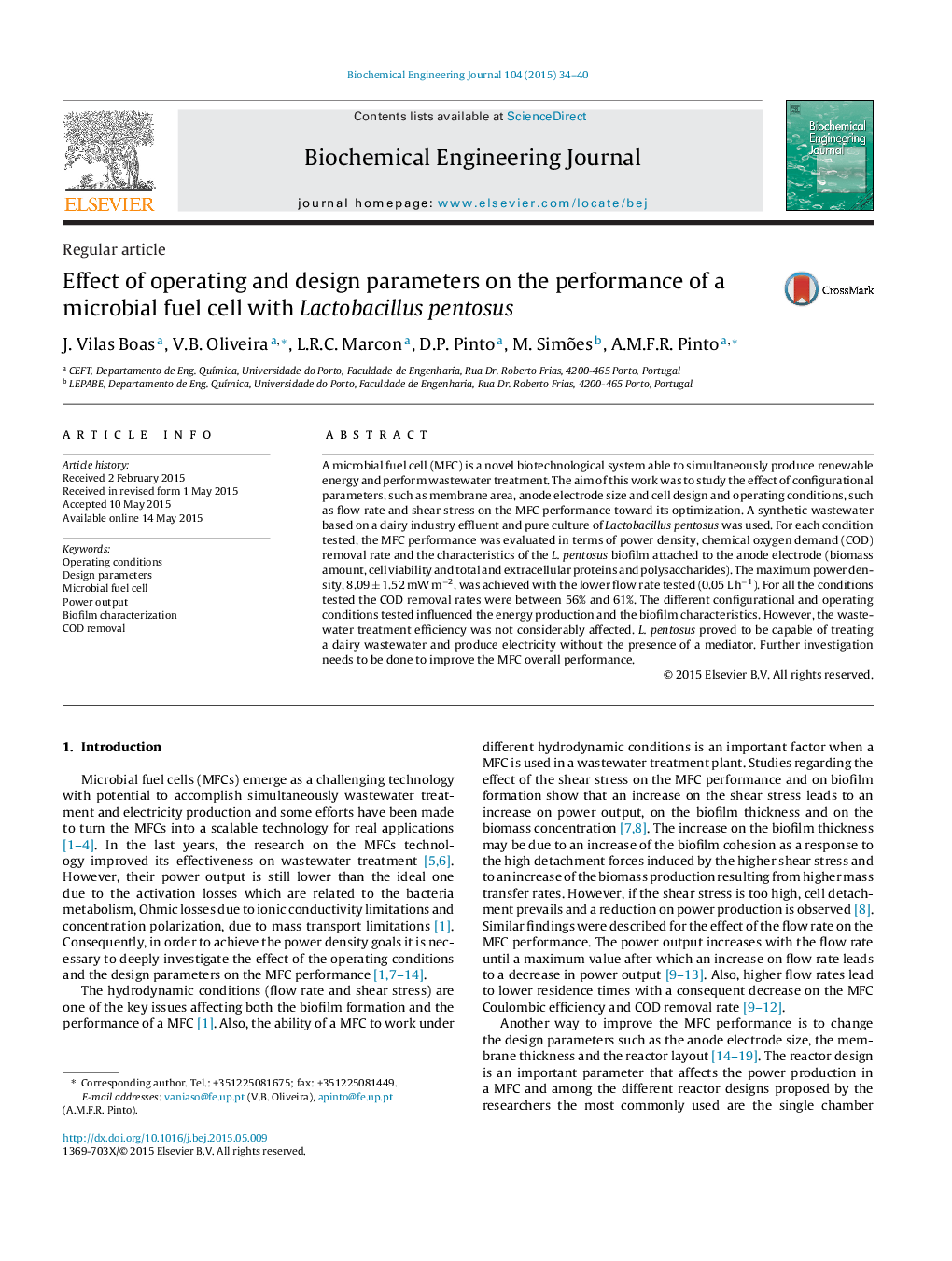| Article ID | Journal | Published Year | Pages | File Type |
|---|---|---|---|---|
| 2786 | Biochemical Engineering Journal | 2015 | 7 Pages |
•The performance of a MFC was studied using a wastewater from a dairy industry.•A maximum power density, 8.09 ± 1.52 mW m−2 was achieved with the lower flow rate.•L. pentosus is capable of developing active biofilms at the anode electrode.•The biofilms of L. pentosus were characterized.•L. pentosus can treat dairy wastewaters and produce energy without mediators.
A microbial fuel cell (MFC) is a novel biotechnological system able to simultaneously produce renewable energy and perform wastewater treatment. The aim of this work was to study the effect of configurational parameters, such as membrane area, anode electrode size and cell design and operating conditions, such as flow rate and shear stress on the MFC performance toward its optimization. A synthetic wastewater based on a dairy industry effluent and pure culture of Lactobacillus pentosus was used. For each condition tested, the MFC performance was evaluated in terms of power density, chemical oxygen demand (COD) removal rate and the characteristics of the L. pentosus biofilm attached to the anode electrode (biomass amount, cell viability and total and extracellular proteins and polysaccharides). The maximum power density, 8.09 ± 1.52 mW m−2, was achieved with the lower flow rate tested (0.05 L h−1). For all the conditions tested the COD removal rates were between 56% and 61%. The different configurational and operating conditions tested influenced the energy production and the biofilm characteristics. However, the wastewater treatment efficiency was not considerably affected. L. pentosus proved to be capable of treating a dairy wastewater and produce electricity without the presence of a mediator. Further investigation needs to be done to improve the MFC overall performance.
